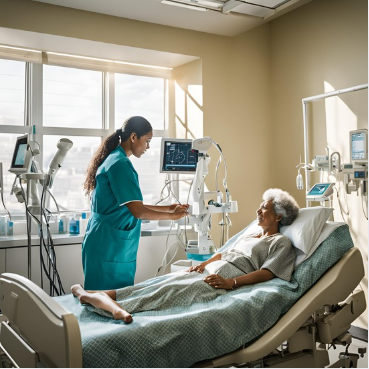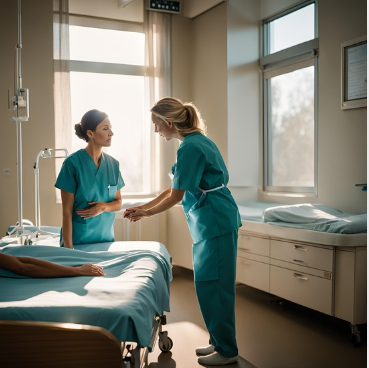Introduction
BHA FPX 4002 Assessment 2 Changes in Medical Education : The scene of clinical practice has gone through quick advancement, requesting specialists to adjust constantly and outfit themselves with the imperative information and abilities to measure up to expanding assumptions. This paper expects to portray the changes in clinical schooling crossing from the 1800s to the current day. Moreover, it will dig into a correlation between the apprenticeship and scholastic models of clinical preparation, graphing their movement. Finally, it will evaluate the significance of grasping the historical backdrop of clinical instruction and its suggestions for current and future clinical alumni.
The Changing Scope of Medical Education
Medication has gone through unique movements since forever ago, molding its contemporary structure. A vital part of this development lies in the change of clinical schooling. In the US, the debut clinical school was laid out by John Morgan in 1765, initially known as the Philadelphia School of Medication prior to being renamed the College of Pennsylvania (Slawson, 2012). During the 1800s, clinical instruction principally rotated around preceptors conveying talks to understudies, lacking organized oversight (Slawson, 2012). Planned clinical understudies during this time were expected to satisfy specific rules, including being something like 21 years of age, going through two years of tutoring, and finishing three years of apprenticeship preparing (Slawson, 2012).

BHA FPX 4002 Assessment 2 Changes in Medical Education
Contrastingly, contemporary clinical training follows a notably unique direction. Hopeful clinical understudies are commanded to get a four-year four year college education, finish the Clinical School Confirmation Assessment (MCAT), and secure admission to an organization certified by the Contact Panel on Clinical Instruction (LCME) (DeZee et al., 2012). Hence, understudies go through concentrated scholarly coursework followed by thorough clinical residency apprenticeships, finishing in the US Clinical Authorizing Assessment (USMLE) (DeZee et al., 2012). By and by, hopeful specialists set out on an instructive excursion crossing eleven years post-auxiliary schooling, highlighting the thorough and dynamic nature of present day clinical preparation.
Apprenticeship versus Academic Models
The groundworks of contemporary clinical training are established in the apprenticeship and scholarly ideal models. Each model offers unmistakable roads for proficient turn of events, encouraging learning and headway open doors for imminent clinical understudies. The apprenticeship model heroes direct commitment to clinical settings, underlining involved figuring out how to develop critical thinking abilities and a significant comprehension of clinical difficulties (Rassie, 2017). This methodology, typified by figures like William Osler, highlights the worth of bedside learning and early tolerant cooperation (Swanson, 2012).
On the other hand, the scholarly model focuses on organized instruction, described by task-driven assessments and pedantic learning (DeZee et al., 2012). The fundamental Flexner Report of 1910 led changes in clinical training, upholding for thorough educational plans, functional lab work, and personnel contribution in research (Barzansky, 2010). Coordination of both apprenticeship and scholastic models develops balanced doctors, consolidating hypothetical information with reasonable clinical abilities, a sign of contemporary clinical training.
Involving Medical Education by Understanding History
Returning to the chronicles of clinical history bears the cost of understudies, an extensive comprehension of clinical hypothesis’ starting points and the job of logical headways in forming care rehearses. Digging into medical care history empowers the clinical local area to gather experiences and keep away from previous mishaps. For example, Florence Songbird’s backing for careful wellbeing and hand cleanliness principles during the 1800s highlights the meaning of proof based rehearses in battling contaminations (Newsom, 2003).

Conclusion
The direction of medication has been pushed by stupendous progressions and a promise to schooling. The combination of apprenticeship and scholastic models in present day clinical training highlights the significance of different learning draws near. By embracing the illustrations of history, clinical instruction keeps on developing, guaranteeing the development of capable and sympathetic medical services specialists. BHA FPX 4002 Assessment 3
References
- U.S. Branch of Wellbeing and Human Administrations (HHS). (2023). HIPAA for experts. Recovered from https://www.hhs.gov
- Places for Government medical care and Medicaid Administrations (CMS). (2023). Reasonable Consideration Act outline. Recovered from https://www.cms.gov
- The Joint Commission. (2023). Principles for medical services license. Recovered from https://www.jointcommission.org
- Word related Security and Wellbeing Organization (OSHA). (2023). Medical services security rules. Recovered from https://www.osha.gov
- American Clinic Affiliation (AHA). (2023). Consistence systems for medical services associations. Recovered from https://www.aha.org
Frequently Asked Questions (FAQs)
Q1: What occurs in the event that a medical care association neglects to follow guidelines?
Rebelliousness can prompt lawful punishments, loss of license, and reputational harm.
Q2: How might little medical care associations oversee consistency successfully?
They can utilize reasonable consistency apparatuses, rethink consistency works, or team up with bigger associations.
Q3: Why is the staff preparing significantly for consistency?
Preparing guarantees that representatives figure out guidelines and adhere to them in their day to day exercises.
Q4: Which job does innovation play in administrative consistency?
Innovation mechanizes consistency errands, further develops precision, and diminishes manual blunders.
Q5: How could associations remain refreshed on evolving guidelines?
Buy into refreshes from administrative bodies and go to consistency studios or online classes.
Table of Contents
Toggle